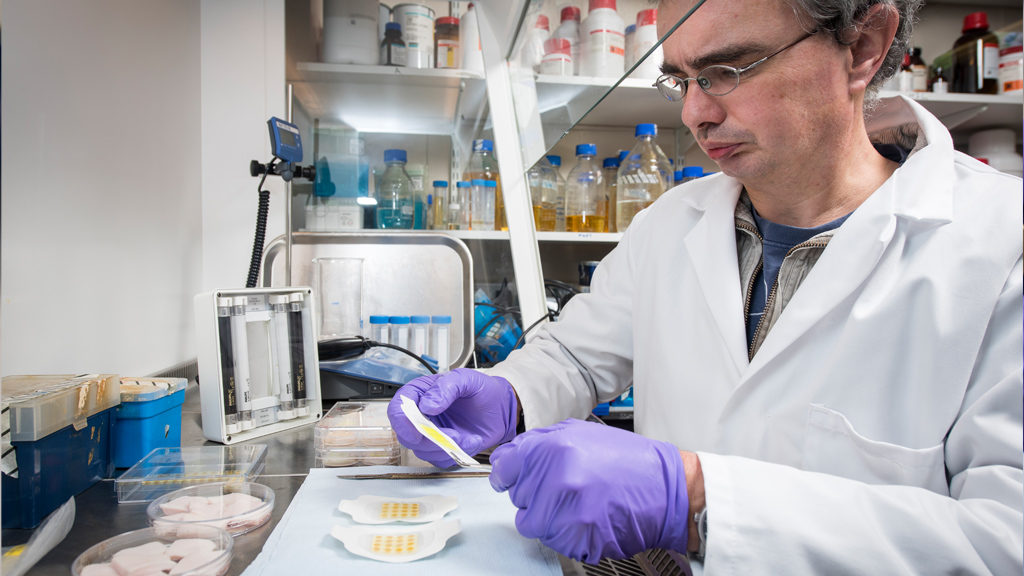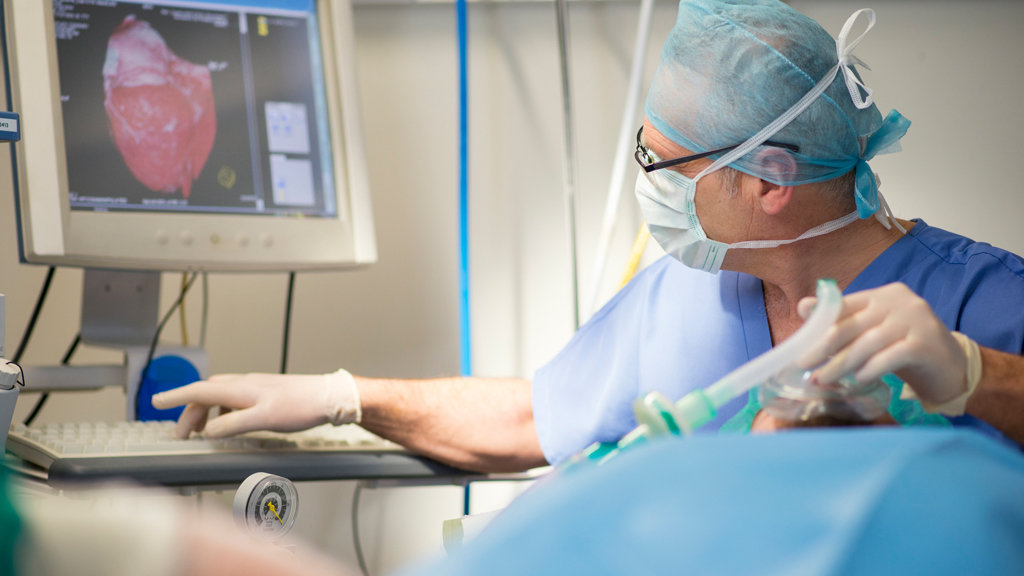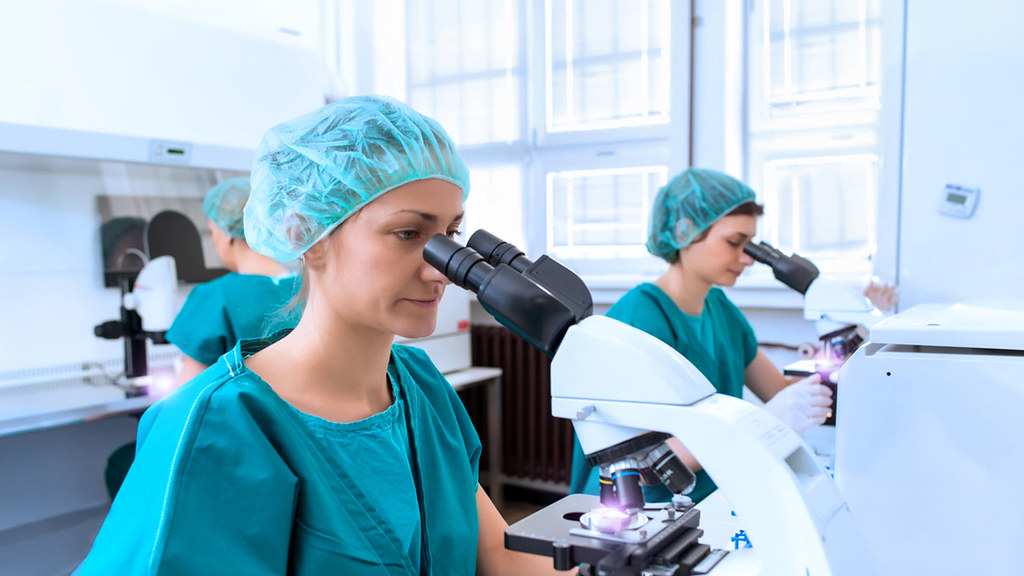Imagine a device that would let you ‘see’ beneath wound dressings and diagnose infection accurately. It would put an end to removing patients’ dressings to do a visual check, and would preclude the need to prescribe antibiotics – that might not be effective or even necessary – while waiting for test results.
The challenge
Bath’s Professor of Biophysical Chemistry Toby Jenkins: 'Correctly diagnosing a wound infection has always been hard because every wound harbours some bacteria; around 10% of surgical wounds develop some sort of infection,' he explains, 'but many of these are likely to self-heal without treatment. The issue is to identify which wounds will not heal without intervention as early as possible.'
'The problem is compounded because there’s little or no clinical consensus on a definition of exactly what constitutes a wound ‘infection’. In fact, infection is a multi-factorial process that depends largely on how contaminated a wound is, how large and deep it is, which bacteria are present and factors such as age and co-morbidities of the patient.'
Professor Jenkins has found a way to produce a surgical dressing that doesn’t just detect that a wound is infected, but indicates that it’s on a pathological trajectory that requires immediate medical intervention.
Going back to basics
'I’ve worked on the active components of our diagnostic wound dressing – phospholipid vesicles – since 1995,' he says, 'and I always thought that one day I’d do something interesting with them. Then, about 12 years ago, I was sitting in the University bar with some colleagues from Biology and Chemistry and asked – rather naively – what I thought was a simple question: why do some bacteria cause infection, and not others? It turns out that only some types secrete toxins that break down host tissue to create their food supply and evade immune clearance, and then colonise. It’s a controlled evolutionary response.'
'Recalling a school history lesson on burns and infection (when I was about 14), made me research burn infection in more detail. I realised there is a real clinical problem here, which we might be able to tackle. From my work on biomimetic lipid vesicles over the last 20 years, I knew we could create vesicles that are chemically similar to human cells – and therefore should respond to secreted toxins from pathogenic bacteria in a similar way.'
Many bacterial toxins break down human cells in wounds by either punching holes through their outer membrane – making pores, or by dissolving away the lipids which make up the membrane. This causes cell death, and tissue necrosis.
On googling ‘burns and infection’, Toby discovered an interesting paper by Dr Amber Young, paediatric burns’ lead at the nearby Bristol Royal Hospital for Children. 'Ah ha! I thought, and immediately emailed her to introduce myself, asking if we could meet,' he says. 'We realised almost immediately that we might be on to something with a clinical utility.'
Seeing the problem first hand
'The problem is that clinicians often don’t understand science, while scientists don’t understand medicine! Amber invited me to meet children with burns, and I talked to nurses and doctors to get a grip of the real problem. Seeing sick children is extremely motivational and as a scientist, I discovered that meeting them is critical.
'One day Amber asked me to visit a child with burns covering 30% of her total body surface area. It was very distressing and profoundly shocking. Amber didn’t know if she’d survive the night, and all they could do was alternate doses of morphine and ketamine for the pain. Thankfully, the child pulled through, and the experience made me realise that you really need to see a patient like this – and recognise the potential effect of the right treatment on the rest of their life – to understand the emotional and broad impact of your work. With Amber pushing the importance of the clinical side, I was able to retain focus, so we didn’t give up when finding a viable solution seemed impossible.'
Avoiding unnecessary antibiotics
'The earlier you can detect infection, the better your chances of treating it successfully. As it stands, wound heat, pain and redness are the three consistent indicators correlated with it, but you can’t necessarily detect any of these under a burn dressing and even if you remove the bandages to check – which can be extremely painful for the patient - you won’t know how dangerous the infection is until lab results come back. Hence a clinician is likely to prescribe antibiotics as a precaution, when they may not be right or necessary.
'The new Smartwound dressing we’ve developed at Bath senses pathological infection and literally glows when it’s detected. It contains vesicles made from a combination of cholesterol and other fatty acids. The exact proportion affects their function and stability so we made model infection systems in the lab and screened hundreds of different combinations.'
Overcoming challenges
Toby’s principle technical hurdles were keeping the vesicles stable even when bacteria weren’t present - when they tend to be unstable - and, at the same time, making them sensitive to only the target pathogenic bacteria. He and two students ‘played around’ for about five PhD student years, over 18 months, until they found and patented the right balance.
The dressings also needed to work in a primarily water-based environment, so the team screened hundreds of systems to find the right hydrogel, typically comprising 90% or more water. In basic terms, they pour this into a mould, let it set, and then fill the cavities with the vesicles suspension. When they sense bacteria they break down in a similar way to cells being broken down by bacteria in our bodies, thus releasing non-active yellow dye into the dressing pad to make it glow.
'Initially, we proposed supplying a UV light to activate the illumination, but clearly that wasn’t practical and added expense,' says Toby. 'Thet Naing Tun, a postdoctoral researcher, came up with this particular solution to this by playing with the gel and concentrations until he found a way to give a brighter response under natural light. He’s been absolutely fundamental to this project as he’s a brilliant engineer. I give him problems, and he just solves them!'
'What’s unusual about the dye is that it’s fluorescent in lower, rather than high, concentrations, and there’s a ‘switch-on’ effect in minutes of detection of pathogenic bacteria. This means doctors will be able to send patients home earlier than before – which is obviously economically sensible – in the knowledge that they can come straight back in for immediate and appropriate treatment if their dressing glows.'
Regulatory hurdles
The dressing is currently manufactured in the teams’ laboratory in the Chemistry department at the University, but in order to comply with regulations for healthcare devices, will need to be manufactured in a highly controlled clean room environment.
To test this on humans they need to get it manufactured with regulatory compliance, and then commission the first human use from the MHPRA to test whether it actually works in-vivo – to determine the probability that the dressing will correctly diagnosing infection in patients and, as importantly, not giving false results. We know it works ex-vivo i.e. when we tested on patients wound bacteria grown in the lab. Medicines and Healthcare Products Regulatory Agency.
'Assuming this is successful, we’ll then apply for CE marking, which will allow us to actually sell the product,' says Toby. 'Ultimately, we also intend to develop an app with an algorithm that will diagnose a wound’s infection status via the dressing colour and even propose an appropriate treatment, linking to individual patients’ personal data and history.'
Funding and licensing
Hartmann, in Germany, have been very supportive and plan to licence the IP (intellectual property), and join forces with the University to get the dressings manufactured. They plan to work with NICE to roll them out in the next two to three years; their protocol is to assess new products that are cost-effective and will help patients.
Each night a single patient spends at home, instead of in hospital, saves the NHS around £400, which is significant; and in the US and other countries it could be ten times that. Factor in extra time in a hospital bed due to complications associated with the delayed diagnosis of a serious infection, and the cost of wasted prophylactic antibiotics, and the potential cost savings and health benefits are even more extensive.
'Funding is always key when it comes to taking a new product to market,' Toby says. 'We think the technological problems have largely been solved but to progress further, we’re dependent on raising another £1.8 million. We need this to secure the requisite regulatory approval, for another range of toxicology studies and for further clinical trials and design modifications, because inevitably there will be iterative feedback from the manufacturers. I also need money to secure Thet to work on this with me, because life without him in the lab can’t be considered. Does he know that? He does now!'
Chance conversations can change lives
'It all started with a chance conversation about children’s burns but, ultimately, we believe the Smartwound dressing will be applicable to diagnosing pathogenic infection in all acute, wounds, including surgical, trauma and burns and are investigating its potential applicability in chronic wounds, such as diabetic foot ulcers. It will also be safe, simple, remarkably cost-effective and extremely reassuring for patients. We’re very optimistic.'
To see published research from Professor Toby Jenkins' group see Opus.



